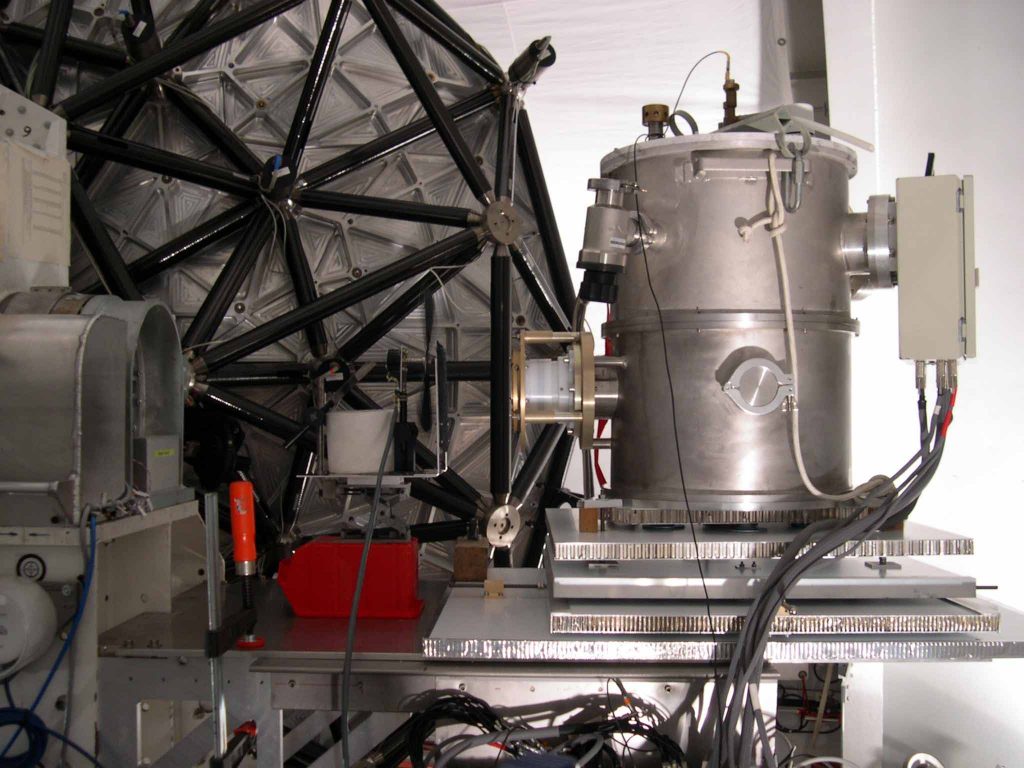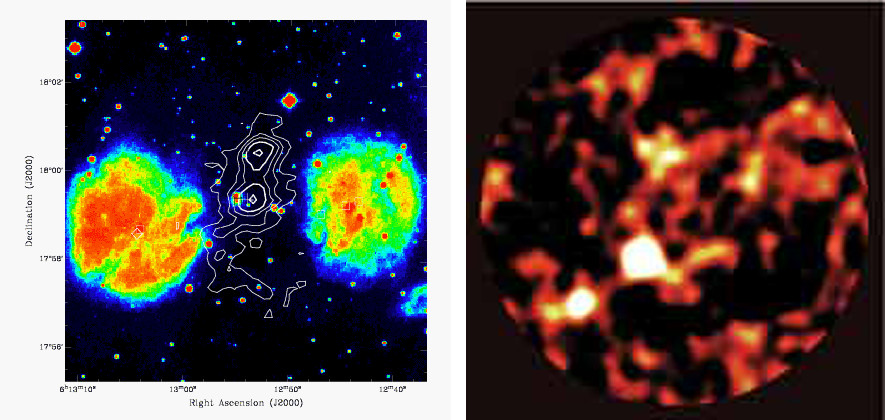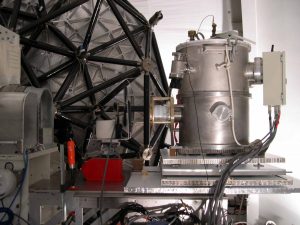Wide-field submm imager for next generation telescopes
The ARTEMIS project aims to develop novel technologies for large arrays of detectors in the submillimetre part of the electromagnetic spectrum. These large array developments will mainly be beneficial for submillimetre astronomy and its needs in the coming years. The study of embedded star formation at all scales in the Universe will particularly benefit with two highlight projects on:
- the earliest phases of star formation: luminosity and mass of massive protostars.
- high redshift galaxies (z>3) and star formation in the early Universe.
Astronomical observations at submillimetre wavelengths are limited either by the angular resolution of the telescope or by the sensitivity and the field of view of the detector array. New generation of radio telescopes, such as the ALMA-type antennas on the high altitude plateau of Atacama in Chile, can overcome these limitations if they are equipped with large detector arrays made of thousands of sensitive bolometer pixels.


Instrumentation developments undertaken at CEA and based on the all silicon technology of CEA/LETI/LIR are able to provide such large detector arrays. The ARTEMIS project consists in building a camera for ground-based telescopes that operates in two sets of atmospheric windows at 200-450 μm and 800-1200 μm. ARTEMIS-1 will be the detector operating in the atmospheric windows between 200 and 450 μm. Its focal plane will consist of filled bolometer array similar to those developed for the Herschel Space Observatory, an ESA mission satellite in which CEA is strongly involved. A prototype camera operating in the first set of atmospheric windows will be installed and tested in 2006 on the KOSMA telescope at Gornergrat (Switzerland) in collaboration with the German team from University of Cologne. From 2007, this prototype camera will be installed in collaboration with the Japanese team from University of Nagoya on the NANTEN-2 telescope located at the Chajnantor site in Chile. ARTEMIS-2 will be the detector operating in the atmospheric windows between 800 and 1200 μm. Its focal plane will consist of filled antenna-coupled bolometer arrays that will be designed based on technology developments made by both CNRS/CRTBT within the national programme DCMB and CEA/LETI. A prototype camera operating in this second set of atmospheric windows will be tested in 2007 on the KOSMA telescope.

By the end of project, the complete ARTEMIS camera could be operated on the APEX-12m telescope in Chile to provide scientific data to the community. ARTEMIS will then open new scientific prospects in the study of the early phases of star formation and in cosmology, in the study of the formation of large structures in the Universe.


